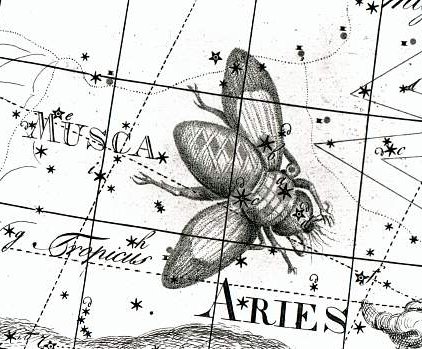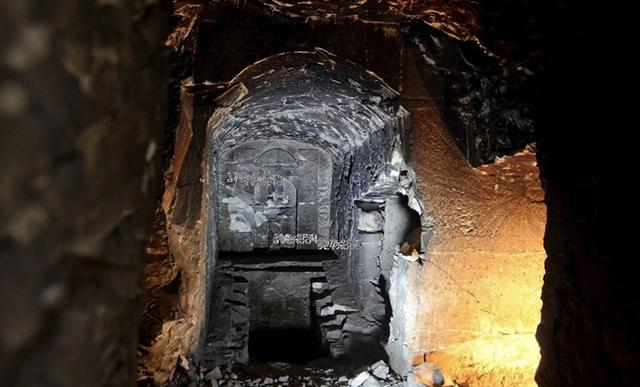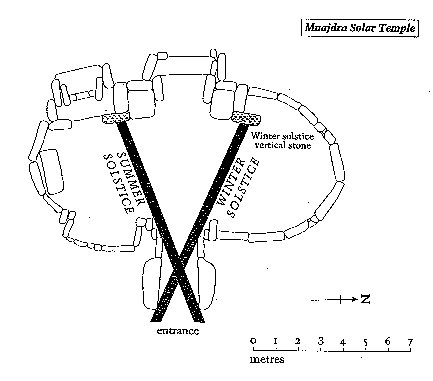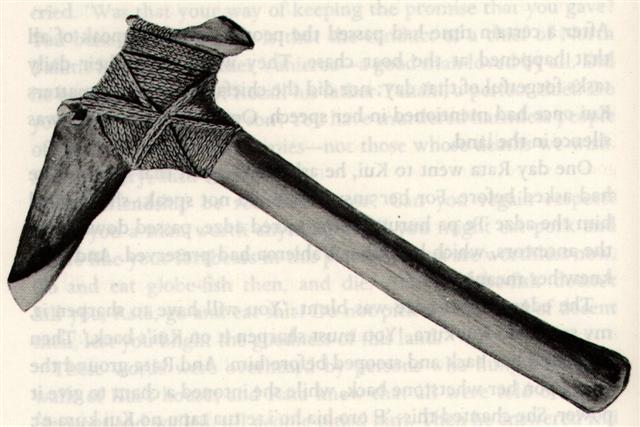111. Probably the Julian calendar in a way had defined where Moko should be buried. The connections between the stars and the ancient seasons were given from the time of the Bull but the positions of the Sun in relation to the stars (and consequently to our calendar dates) had been defined in Roman times. "To the Romans we owe but little in the way of astronomy, - indeed they always were ready to acknowledge the superiority of Greece in this respect, - although we find much of stellar mythology and meteorology in their poetry and prose. No real astronomer, however, appeared among them; and when Julius Caesar needed such for his reform of the calendar, albeit himself somewhat skilled in the science, as his De Astris shows, he was compelled to call Sosigenes to his aid." (Allen) But since then the precession had moved the stars ahead with 27 days and 'June 24 (175) had moved ahead to July 21 (202 = 175 + 27), with June 1 (152) corresponding to 'May 5 (152 - 27 = 125). 50 = 202 - 152 = 175 - 125.
... Ma.: The deity Rongo: Ka ki atu a Tu raua ko Roko ki a Rehua ... To make a King (haka-ariki) would in Roman times have been due in day 5 * 5 * 5: ... In north Asia the common mode of reckoning is in half-year, which are not to be regarded as such but form each one separately the highest unit of time: our informants term them 'winter year' and 'summer year'. Among the Tunguses the former comprises 6˝ months, the latter 5, but the year is said to have 13 months; in Kamchatka each contains six months, the winter year beginning in November, the summer year in May; the Gilyaks on the other hand give five months to summer and seven to winter. The Yeneseisk Ostiaks reckon and name only the seven winter months, and not the summer months. This mode of reckoning seems to be a peculiarity of the far north: the Icelanders reckoned in misseri, half-years, not in whole years, and the rune-staves divide the year into a summer and a winter half, beginning on April 14 and October 14 respectively. But in Germany too, when it was desired to denote the whole year, the combined phrase 'winter and summer' was employed, or else equivalent concrete expressions such as 'in bareness and in leaf', 'in straw and in grass' ... And when the Explorers had arrived to Easter Island in Maro 1 this date could have alluded to the current date June 1, although basically it was probably referring to the date at the time of Bharani. In June 1 (152) - 41 = "April 21 there were 152 - 41 = 111 (→ 3 men) etoru gagata standing up together. The mission of the Explorers was to prepare for the arrival of their king and 111 + 177 (→ 6 * 29˝) = 288 ("October 15).
In order to ascertain the position of Antares (of their king Hotu A Matua) to be in day 288 (= 12 * 24 = the date which also the Pope Gregory XIII had chosen for the birth of his new calendar) ... The Julian calendar day Thursday, 4 October 1582 was followed by the first day of the Gregorian calendar, Friday, 15 October 1582 (the cycle of weekdays was not affected) ... it was necessary to add 14 more days to the star positions as they had been at the time of Julius Caesar. *27 + *14 = *41 (May 1) was the right ascension position of Bharani.
At the time of rongorongo Antares rose heliacally in day 329 (November 25) and 329 - 41 = 288 ("October 15 = Tagaroa Uri 15). ... The canoes of Ava Rei Pua and of Hotu were seen near the (off-shore) islets. On the fifteenth day of the month of October (tangaroa uri) the canoe of Hotu and the canoe of Ava Rei Pua landed. On the fifteenth day of the month of October (tangaroa uri), Nonoma [probably a name for Jupiter, Jus Piter, Father Light] left the house during the night to urinate outside ... Therefore the Explorers would have reached Hanga Te Pau not in 'June 24 (St John's Day) but in 175 ('June 24) - 14 = 161 ("June 10) = 202 (July 21) - 41 = 111 ("April 21) + 50 (= 115, Vaitu Nui 25, + 46). (Where probably 46 = 50 - (84 - 80), because the Pope Gregory XIII had changed the equinox date with 4 days from the Julian March 25 to March 21.) This in a way explains the otherwise rather curious date given for the beginning of the Roman month of the Oak. However, 161 + 11 (calendar days from the northern winter solstice to the end of the year) = 172 (June 21, my date for the northern summer solstice) = 84 (Julian equinox) + 88. Counted from day 355 (winter solstice) to 172 (summer solstice) there were 366 + 172 - 355 = 183 (= 366 / 2) days. And the Oak of Jupiter stretched all the way from the Underworld up to the Heaven above:
Thus there were 14 right ascension days (glyphs) from 'June 10 (Ca11-7) to "June 10 (Ca11-21) and 41 (= 27 + 14) glyphs (right ascension days) from June 10 (161) to Ca11-21 (305):
The Bright Fire star was, however, not where we would have expected it to be, viz. in 'June 24 (175) + 27 = 202 (July 21). It seems as if the counting suddenly changed from heliacal to nightvision because it had turned dark after Father Light had been sacrificed.
At heliacal Al Tarf (the End) in MAY 20 (140) the Goat star (Gredi) had been at the Full Moon:
The glyph type manu kake (for instance in Ga3-1) could therefore have alluded to the double-faced Janus and to his month of January. South of the equator the corresponding place should have been the month of July (from Julius Caesar).
... Sir James Frazer, like Gwion, has pointed out the similarity of 'door' words in all Indo-European languages and shown Janus to be a 'stout guardian of the door' with his head pointing in both directions. As usual, however, he does not press his argument far enough. Duir as the god of the oak month looks both ways because his post is at the turn of the year; which identifies him with the Oak-god Hercules who became the door-keeper of the Gods after his death. He is probably also to be identified with the British god Llyr of Lludd or Nudd, a god of the sea - i.e. a god of a sea-faring Bronze Age people - who was the 'father' of Creiddylad (Cordelia) an aspect of the White Goddess; for according to Geoffrey of Monmouth the grave of Llyr at Leicester was in a vault built in honour of Janus. Geoffrey writes: Cordelia obtaining the government of the Kingdom buried her father in a certain vault which she ordered to be made for him under the river Sore in Leicester (Leircester) and which had been built originally under the ground in honour of the god Janus. And here all the workmen of the city, upon the anniversary solemnity of that festival, used to begin their yearly labours. Since Llyr was a pre-Roman God this amounts to saying that he was two-headed, like Janus, and the patron of the New Year; but the Celtic year began in the summer, not in the winter. Geoffrey does not date the mourning festival but it is likely to have originally taken place at the end of June ... What I take for a reference to Llyr as Janus occurs in the closing paragraph of Merlin's prophecy to the heathen King Vortigern and his Druids, recorded by Geoffrey of Monmouth: After this Janus shall never have priests again. His door will be shut and remain concealed in Ariadne's crannies. In other words, the ancient Druidic religion based on the oak-cult will be swept away by Christianity and the door - the god Llyr - will languish forgotten in the Castle of Arianrhod, the Corona Borealis. This helps us to understand the relationship at Rome of Janus and the White Goddess Cardea who is ... the Goddess of Hinges who came to Rome from Alba Longa. She was the hinge on which the year swung - the ancient Latin, not the Etruscan year - and her importance as such is recorded in the Latin adjective cardinalis - as we say in English 'of cardinal importance - which was also applied to the four main winds; for winds were considered as under the sole direction of the Great Goddess until Classical times. As Cardea she ruled over the Celestial Hinge at the back of the North Wind around which, as Varro explains in his De Re Rustica, the mill-stone of the Universe revolves. This conception appears most plainly in the Norse Edda, where the giantesses Fenja and Menja, who turn the monstrous mill-stone Grotte in the cold polar night, stand for the White Goddess in her complementary moods of creation and destruction. Elsewhere in Norse mythology the Goddess is nine-fold: the nine giantesses who were joint-mothers of the hero Rig, alias Heimdall, the inventor of the Norse social system, similarly turned the cosmic mill ... Accroding to Manuscript E the fate of Kuukuu was the same - to be buried in an underground vault: ... They put the injured Kuukuu on a stretcher and carried him inland. They prepared a soft bed for him in the cave and let him rest there. They stayed there, rested, and lamented the severely injured Kuukuu. Kuukuu said, 'Promise me, my friends, that you will not abandon me!' They all replied, 'We could never abandon you!' They stayed there twenty-seven days in Oromanga. Everytime Kuukuu asked, 'Where are you, friends?' they immediately replied in one voice, 'Here we are!' They all sat down and thought. They had an idea and Ira spoke, 'Hey, you! Bring the round stones (from the shore) and pile them into six heaps of stones!' One of the youths said to Ira, 'Why do we want heaps of stone?' Ira replied, 'So that we can all ask the stones to do something.' They took (the material) for the stone heaps (pipi horeko) and piled up six heaps of stone at the outer edge of the cave. Then they all said to the stone heaps, 'Whenever he calls, whenever he calls for us, let your voices rush (to him) instead of the six (of us) (i.e., the six stone heaps are supposed to be substitutes for the youths). They all drew back to profit (from the deception) (? ki honui) and listened. A short while later, Kuukuu called. As soon as he had asked, 'Where are you?' the voices of the stone heaps replied, 'Here we are!' All (the youths) said, 'Hey, you! That was well done!' ...
... The Mnajdra Temple is located on Malta and very ancient, dating to the time before the pyramids. Marija Gimbutas: 'To sleep within the Goddess's womb was to die and to come to life anew'. In a system of reincarnation the old one must die in order to be reborn, of course. At midsummer Sun comes to a standstill, and this must therefore be an occasion when the 'flame of life' had to be transported into a new body. ... Then I become aware of ... a presence - a faint, ghostly glimmering, like moonglow, that has appeared on the solstice stone. I don't know how long it lasts, a second or two only I would guess, but while it is there it seems less like a projection - which I know it to be - than something immanent within the stone itself. And it seems to function as a herald for it fades almost as soon as it has appeared and in its place the full effect snaps on - instantaneously. It wasn't there, and then it's there. As Chris had described, the effect does curiously resemble a poleaxe, or a flag on a pole, and consists of a 'shaft', narrow at the base but widening a little towards the top, running up the left hand side of the solstice stone, surmounted by a right-facing 'head' or 'flag'. An instant later an almond-shaped spot of light, like an eye, appears a few centimeters to the right of the 'flag' and the effect is complete. Weirdly - I do not claim it has any significance - this flag-on-a-pole symbol is the ancient Egyptian hieroglyph neter, meaning 'god', or 'a god' - and not to be understood at all in the Judaeo-Christian usage of that word but rather as a reference to one of the supernatural powers or principles that guide and balance the universe. Manifested here, in this strange Stone Age temple, it glows, as though lit by inner fire.' Neter, the Egyptian hieroglyph for 'God', could be equivalent to the toki type of glyph:
|
||||||||||||||||||||||||||||||||||||||||||||||||||||||||||||||||||||||||||||||||||||||||||||||||||||||||||||||||||||||||||||||||||||||||||||||||||||||||||||||||||||||||||||||||||||||||||||||||||||||||||||||||||||||||||||||||||||||||||||||||||||||||||||


























